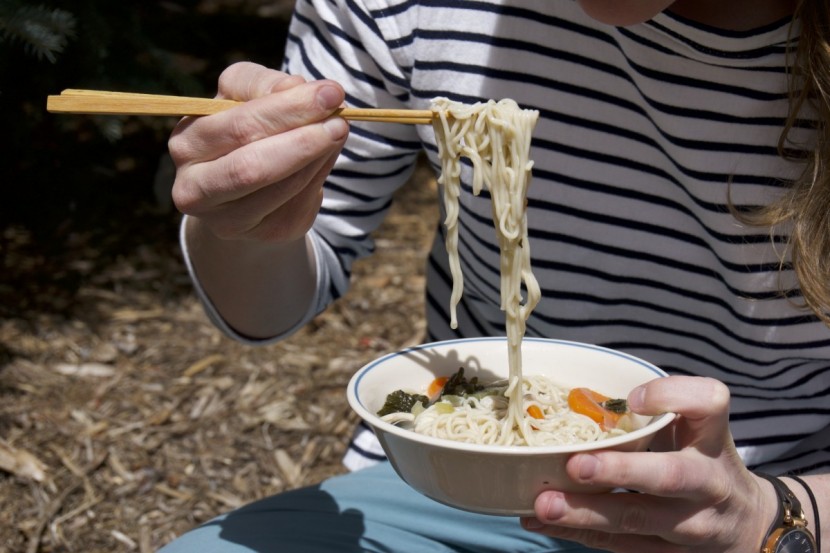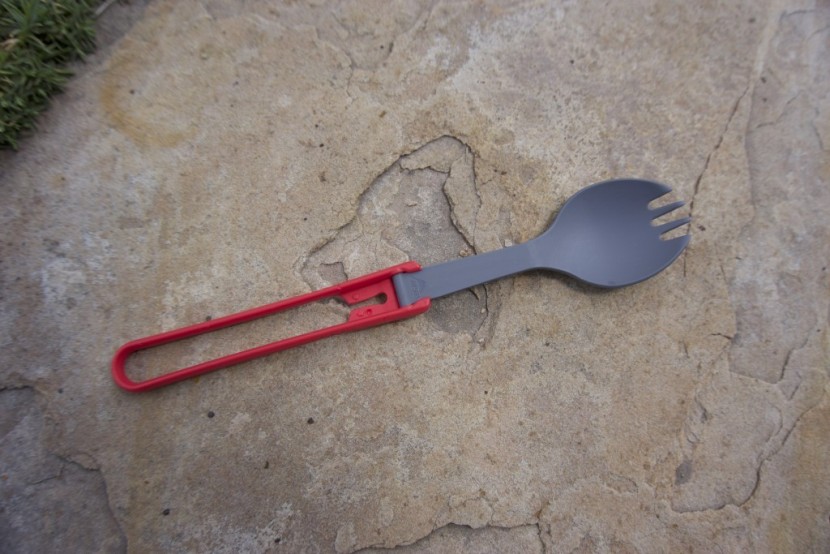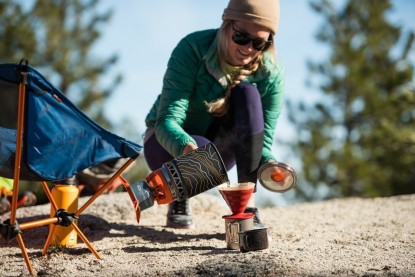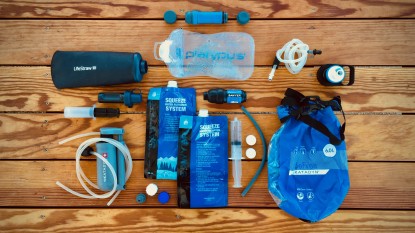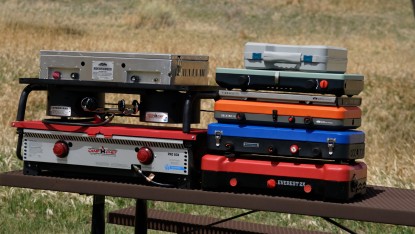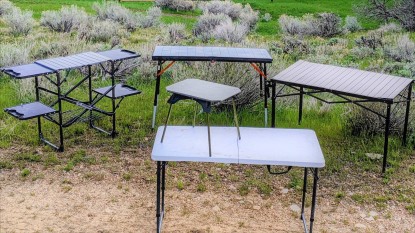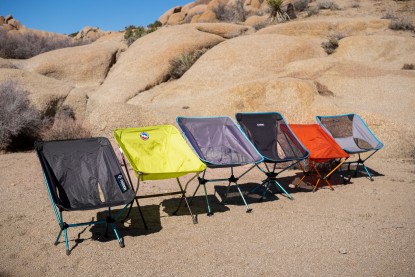Using tools with our opposable thumbs is one of the defining characteristics of being human. Be it a spoon, fork, knife, or chopsticks, these instruments are designed with the sole purpose of facilitating our consumption of food. Your silverware drawer at home likely contains a variety of those utensils. After all, few want to eat soup with a fork. But what happens when you want to eat on-the-go? Carrying a set of classic silverware is both bulky and heavy, and single-use plastic utensils are wasteful and might leach toxic chemicals. Enter the spork. It's the perfect combination of utility and portability. Most models are lightweight, ranging from 1.8 oz all the way down to 0.3 oz and offer the versatility of both a SP-oon and a f-ORK.
Electing to forgo a more formal table setting and adopting a hybrid utensil for your travel eating needs may seem like a no-brainer, but picking the right model isn't as simple as it sounds.
Where you plan to use it, what you plan to use it for, and how dependent you are on its survival for your own, are a few of the main factors to take into consideration. To answer these questions, we tested the most popular models on the market to determine their performance as eating instruments and cooking tools. We also evaluated how easy they were to clean and their ability to withstand sustained use without breaking or deforming. We pushed these utensils to find their limits so when you find yourself eating somewhere deep in the Andes, you don't find yourself eating that bag of Mountain House with your hands.
Location, Location, Location
Where you plan to use your spork plays the biggest role in determining the necessary requirements. Like most things, the more technical the equipment, the higher the price tag. These products range from $3 to $18, and for the most part, the more expensive models have more activity-specific features.
Weight & Durability
For backpacking, your primary concerns are durability and weight. A lightweight model won't serve you if it only lasts part way through your trip. Reliability counts if you are planning a rafting trip down the Grand Canyon or even a week-long trip in the Adirondacks, but so does reducing the total weight of your gear. While a few fractions of an ounce might seem insignificant, when all of your possessions are strapped to your back for mile after mile, every little bit counts.
Comfort
Comfort in the backcountry is no small luxury and eating should be about food, not the vehicle you use to transport it from plate to mouth. With exceptional scores in durability and comfort as well as a reasonable weight of 0.6 oz, our Editors' Choice, the Snow Peak Titanium, is a great option no matter where you plan to take it. Lighter models, like the Vargo Titanium ULV and the humangear GoBites Uno, scored above average in comfort and durability. The former is one of the pricier models but won our Top Pick for Ultralight Backpacking due to its super lightweight, resistance to breaking, and decent resemblance to a normal utensil. The humangear GoBites Uno, on the other hand, is a resilient plastic alternative that boasts an exceptionally low price tag which earned it our Best Buy Award.
Front Country Dining
While most of the models suitable for backpacking perform well in the front country, car camping and workday or school lunches lead to more flexibility. Comfort can become a top priority, and for that, the Snow Peak Titanium takes the cake as it most closely resembles what's already in your kitchen but brings the added versatility of a hybrid. When it comes to kids, sending a more expensive and pokey titanium model to school with your child might be a bit of a risk. The humangear model offers the safety of plastic, and its low price tag makes it a bit easier to replace if it magically grows legs and wanders off on its own…
Keeping it Clean
Where and how you plan to wash your dishes will suit some models better than others. Fortunately, all of the models we tested are dishwasher safe except the Sea to Summit AlphaLight. While this may seem like a bummer for that particular product, its long handle and angled bowl make it best for backcountry cooking where we're pretty sure you won't have a dishwasher handy anyways.
The material and design also affect the utensil's cleanliness. The titanium models are easier to wipe clean and/or rinse with cold water than the plastic alternatives. Folding models also have extra grooves at their joints where bits of food are prone to linger. Last but certainly not least, the products with double-ended designs are a recipe for dirty hands and contaminated dinner unless you are committed to using either a spoon or a fork but not both.
The Multi-Tool Utensil
Non-Stick Cookware
When backpacking, your spork has to double not only as a drawer full of silverware but also as your cooking gadget. If you're planning to cook with a non-stick, beware. Every model except the Light My Fire Original scratched our “extra durable” Teflon coated pan during testing.
Dehydrated Food Bags & JetBoilsIf preparing dehydrated food in its bag or cooking with a JetBoil stove is your style, a long-handled model comes in handy. While the standard is 6.5-inches from tip to tines, the MSR Folding is 8.5-inch long when extended, and the Sea to Summit AlphaLight Long boasts a 10.5-inch profile. This added reach keeps your fingers out of your food and far above the flame when cooking. The Sea to Summit also has a small bowl with a sharp angle that excels at stirring even if it feels a bit odd to eat with.
Different Cuisines
The beauty of these hybrid utensils is in their ability to handle a variety of foods better than a spoon or a fork can alone. Once you've eaten spaghetti with a spork, you'll be asking the Italians why this wasn't invented decades ago. The double-ended models, however, lose out on this newfound pasta-perfect identity. The type of food you typically like to eat on your adventures will influence the style of spork that suits best serves you.
While none of these products are as ideal for slurping soup as a deeply laden Asian soup spoon, most of them hold enough liquid to be sufficient. To test their soup carrying capacity, we used a syringe to load the bowl of each model to its maximum. Not surprisingly, the double-ended models without the slots of the tines performed best, but after eating countless bowls of ramen, chili, and chicken soup with these products, we found this measurement to only minimally impact our preferences. When it was an option, our adventurous testers often preferred to drink or slurp directly from the bowl rather than mess around ladling food into their mouths.
Material Matters
Nylon and other plastic models, like the MSR Folding and Light My Fire Original, are prone to deforming with repetitive use in a hot pan. While none of the plastic models outright melted during testing, the edge that touches the pan becomes deformed over time. The thick walls of the plastic models also rendered them less useful for slicing. This might not matter if you bring a pocket knife, but in that case, avoid the temptation to slice over anything other than a hard surface. Otherwise, use the thin-walled edge of one of the metal versions to slice through cheese while sparing your thigh the need for stitches.
Health Implications
Titanium is a high-grade material that is resistant to wear and tear. This means that it will not only withstand the harshest of adventures, but it will also keep its particles to itself and not wind up leaching chemicals into your food. Stainless steel follows a similar suit. Aluminum, on the other hand, is a heavy metal that has been known to contaminate food when in contact with heat. While this applies more so to aluminum pots and pans, it's still something to be aware of.
When it comes to plastic, the main concern is BPA (bisphenol-a), a toxic chemical linked to cancer growth in humans. Fortunately, all of the models we tested are BPA-free, but it is only one of many potentially harmful chemicals found in plastic. As research continues to emerge about the dangers of these petroleum-based polymers, it's wise to proceed with caution. The white plastic silverware you find at fast-food establishments comes with no guarantee and whether you elect to buy one of the plastic or metals products we tested, you can at least be sure that you are not adding BPA to your meals.



